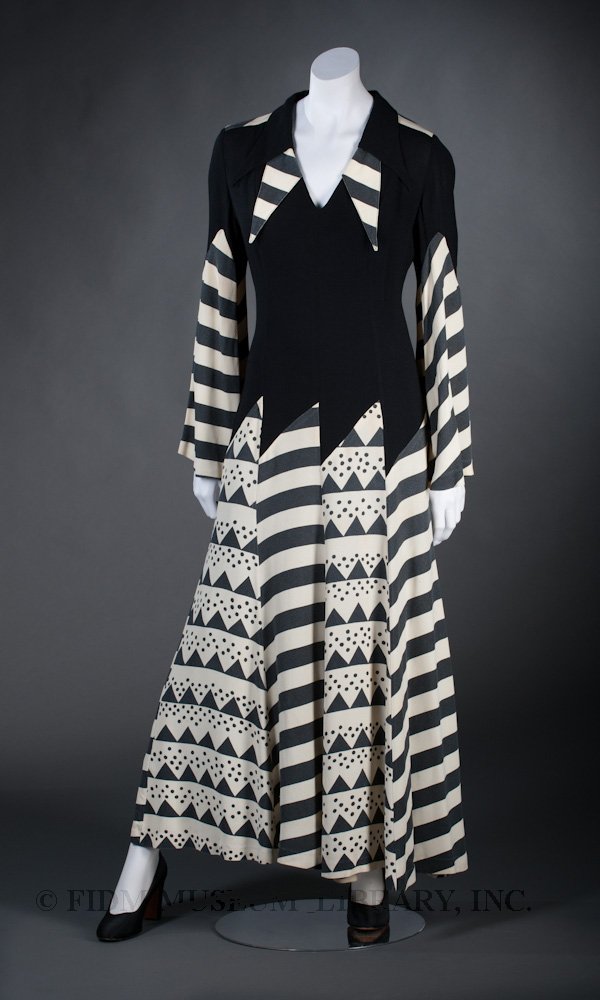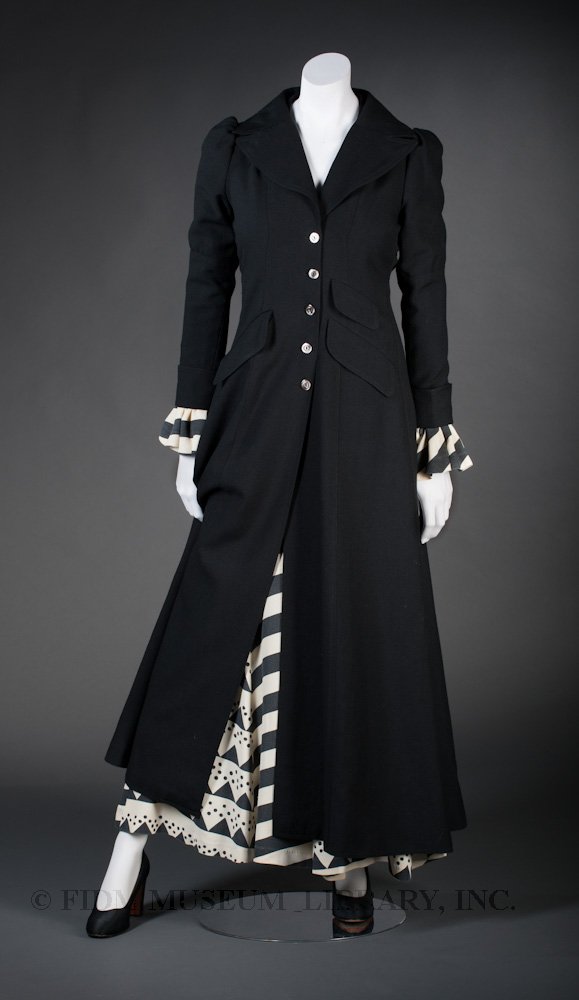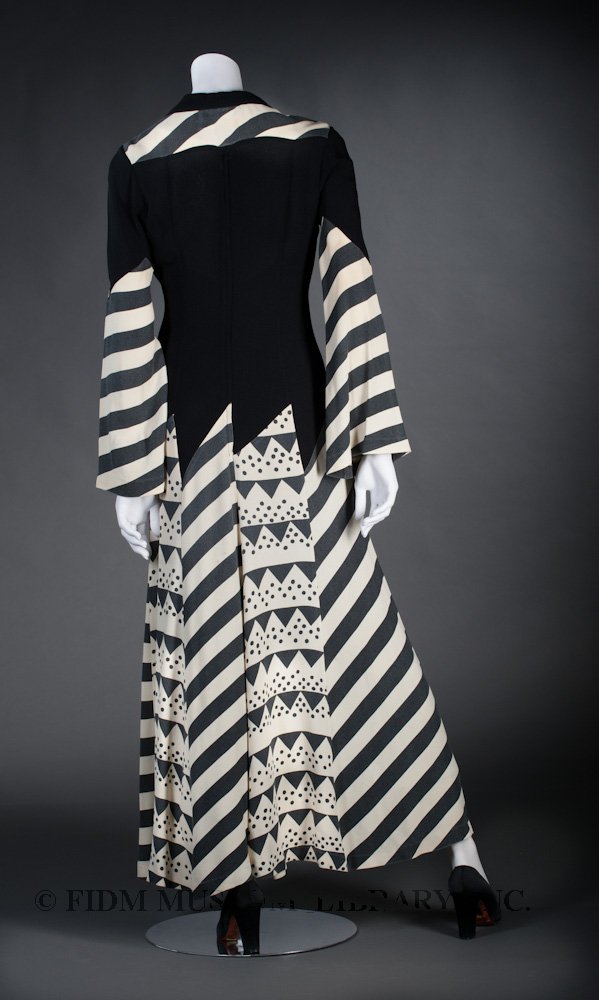In August 1965, British Vogue featured the designs of Ossie Clark, a recent graduate of London's Royal College of Art. Clark's graduation collection featured the graphic patterns and short shift dresses that were popular in the freewheeling milieu of mid-1960s Swinging London. Within a few years, Clark's style had evolved, relying on dramatic sleeves, peek-a-boo cut-outs, flowing skirts, and a defined waistline to create a flattering, overtly feminine silhouette. Clark's aesthetic was informed by his love of glamour and an appreciation for a curvaceous silhouette. According to one woman who wore his designs regularly, "the clothes were intoxicating to wear. They made you feel omnipotent and feminine because they were so complimentary to the body."1 She was not alone in her feelings about Ossie Clark's designs; more testaments to his work can be read here. Clark's clients and fans included Liza Minelli (she wore Ossie Clark in the 1972 film Cabaret), Marianne Faithfull, Suzy Menkes, Mick Jagger and Twiggy. Maxi-dress
Maxi-dress
Ossie Clark with print by Celia Birtwell
c. 1969
Gift of Honeya Barth
2008.923.1A
Though Clark was responsible for the cut of his garments, Celia Birtwell's vibrant textile patterns were crucial to their appeal. The two talented designers met while art students in the late 1950s, beginning a friendship that evolved into romance (they were married in 1969) and a close creative partnership. Birtwell's patterns were swirling, fanciful interpretations of the natural world, portrayed in vibrant colorways; the geometric pattern seen on this maxi-dress is somewhat unusual. Clark was aware of how important Birtwell's textile patterns were to the success of his designs, even featuring her name on his garment labels. The label inside the black and white dress pictured here reads, "Ossie Clark, Made in London, Print by Celia Birtwell."
This dress, and a coordinating Ossie Clark maxi-coat, were purchased by the donor's mother for the donor to wear to the Grammy Awards. Though the donor wasn't sure of the exact date, she thought the ensemble was purchased in 1969. We weren't able to find an image confirming the exact date of this black and white dress, but we did unearth a 1970 video clip featuring a very similar Ossie Clark dress. Clark probably produced more than one version of this style, with each version incorporating different colors or patterns.
The severity of the coordinating coat acts as a counterbalance to the playful graphic patterning seen on the dress. Tailored coats and jackets were an important part of Clark's design vocabulary, a complement to his romantic dresses. This coat is inspired by the redingote, a heavy coat worn by men for traveling or riding during the 18th century. Near the end of the 18th century, a modified redingote appeared as womenswear. Redingote-style gowns were worn off and on throughout the 19th century, reemerging as women's outerwear late in the century. Clark's reinterpretation of the redingote highlights his knowledge of historic fashion, while also pointing out that the romanticism of late 1960s and early 1970s fashion was often informed by historic styles.  Maxi-coat
Maxi-coat
Ossie Clark
c. 1969
Gift of Honeya Barth
2008.923.1AB
1 Watt, Judith. Ossie Clark: 1965-74 V & A Publications: London, 2005: 76.


